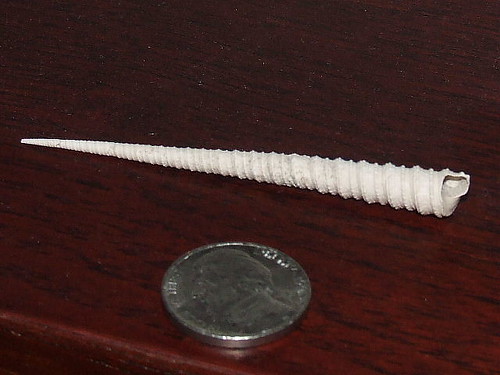Turritella perattenuata fossil, next to a nickel (for scale).
Caloosahatchee fm[1]., Brandtley quarry, near Highway 31, Florida.
This is a Caloosahatchee fossil, the remarkably elongate and now-extinct Turritella perattenuata. The Caloosahatchee is said to straddle the Plio-Pleistocene boundary, which, according to the Geological Society of America Geological Time Scale, occurs at 1.8 Myr. The Caloosahatchee fauna is tropical, but the Lower Pleistocene Bermont formation above it in the South Florida section shows temperate elements.
Image: Biosparite.
I am receiving so many gorgeous pictures from you, dear readers, that I am overwhelmed by the beauty of the images and the creatures and places in them. If you have a high-resolution digitized nature image (I prefer JPG format) that you'd like to share with your fellow readers, feel free to email it to me, along with information about the image and how you'd like it to be credited.
.


PROOF POSITIVE THAT UNICORNS EXIST!
I must say, they are smaller than I had been led to believe.